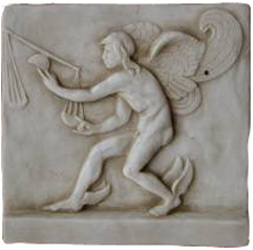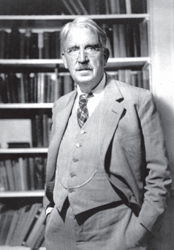You are in: Home page > Magazine Archive > Time in History and Time in Architecture

"kairos" è il tempo indeterminato nel quale accade "qualcosa" di speciale. Nell'antica Grecia significava il "momento giusto o opportuno".
Abstract
An intervention on top of existing buildings – so-called “building on the built”, is always the creative outcome of an act of determination. The architect operates at different levels in relation to various “times”, the time of general history and the specific time of particular history, in which the internal mechanism of the compositional process takes place.
The sole sentinel that watches over the appropriateness of the result is taste, which, as Galvano della Volpe understood it, assumes the responsibility of expressing the contradiction between the specific and autonomous linguistic nature of the work and the values recognized by its own time.
Introduction
As a question, “building within the built” (Bauen im Bestand) involves Time. A building or a site are constructed in relation to an existing (urban) fact, and above all “after” the existing fact. Within this succession of occurrences history is produced in its “permanent evolution”. For Rogers “the sense of history” consists precisely in establishing ‘a relationship in time between the present moment and the moments that preceded it. (…).’ (1)
It is at this point that we must make an effort to distinguish between the Time of history and the Time needed for the architect’s work. A book like “The Architecture of the City” is a gruelling and contradictory account of the emancipation of architecture from contingent reasons (historical and phenomenological) to reacquire an autonomy and specific historical experience. Gianugo Polesello clarifies with his usual lucidity the type of experience and time that belongs to architecture: ‘(...) The same argument applies to architecture, and from there a partial explanation of our curiosity, our fascination and our passion for the world of architectural metaphysics, architecture outside time, a simultaneous blending of the Attic world or the Egyptian world and the modern world, seeing the modern world as ancient and being able to shuffle the cards.’ (2)
It needs to be constantly repeated that architecture does not belong among those disciplines whose production process is only subject to the Time of “general history”. It is continuously nourished by its own particular experience, all occurring within its own specific characteristics. Rogers himself proceeds by warning us against a simplistic adoption of the relationship between the “present moment” and the “moments that preceded it”: ‘(...) It will be a matter of seeing the relationship, the reason for this relationship, its quality, and its consequences.’ (3)
This finds confirmation in the fine article above by Andreas Hild: Gedacht/Gebaut.
The Time of Form.
First and foremost we can distinguish between a “general history”, that marks off the succession of events according to a logic of linear time and a “particular history”, specific to the discipline being operated in. For architecture this is a history which, contradicting its own nature, collects the materials of experience in a timeless space, whose repertoire is continuously supplemented by materials produced later on. Thus, “building within the built” means taking both these kinds of material into consideration (Bestand): “environmental pre-existences” (4), whether physical or cultural, belonging to historical and phenomenological topicality, plus the pre-existences accumulated by the discipline during its millenary experience.
Then there is a third type of “quality” in the relationship “between the present moment and the moments that have preceded it” and that is the one that governs the “internal space” in which the compositional process takes place. Undoubtedly, this too is circular time, whose events lie between the position of an initial hypothesis and an outcome, at the end of which the architectural object emerges from its indeterminacy to accept a definitive form. This is a specific and metahistorical time, within which operate “internal mechanics”, that Luciano Semerani can only define as “obsolete”. (5) The ancient Greeks distinguished this type of time from preceding time by using the word kairos. If kronos quantitatively measures the distance between a before and after, kairos indicates an indeterminate period in which “something” special occurs. I don’t know whether this has anything to do with the “fading” (Überblendung) in Hild’s article, i.e. with the ambiguity in which the language relationship between “building” and “built” is established. It certainly involves the indeterminacy that precedes a final determination, of which form is an expression and which led Rogers to say: ‘For us, everything occurs instead, from its vital internal nucleus and leads us, step by step, towards the final conclusions. Naturally, for us, a determinant intuition cannot be excluded, one that already contains a certain taste, a personal choice, for expressive language; but while we are designing we try to hold back every apriorism of the forms as much as possible.’ (6)
Ethics and Creativity.
The relationship between “building” and “built” increasingly resembles that between creator and work, i.e. between the subject (the architect that intervenes in the built, constructing it) and the object (the built). And perhaps every work of architecture is always a “building within the built”, in the course of which creative process the intention of the architect and his critical capacity play fundamental rôle.
Let’s recall two definitions:
1. “Creativity can be recognized from this; that it is a intervention in the dialectic process of reality” (7) and
2. the concept of “objective imagination”.
1. The reality of architecture, the “built”, is always the resolving summary of the relationship between a desire and the already “built”, at one and the same time pre-existence and pretext. The architect is the intermediary, who allows the perpetuation of the “built on built” circle, in a replica the city responds to in its essential meaning: to remain itself while constantly transforming itself. (8)
2. In truth, each person occupied in the arduous creative process of constructing the world finds him or herself as a mediator between subject and object. In his fine essay, “The Significant Benefit of a Single Intelligent Word” (9), Goethe illustrates the “objective imagination” method.
This method consists in “building” a literary work starting from the “built” represented by the fables and legends, that his parents told him when he was a child. The fables of childhood were the pretext upon which to graft repetition or “continuing to write” (weiterschreiben): ‘Certain grand motifs, legends, millenary traditions impressed themselves so deeply on my senses, that I kept them alive and operative in me for forty or fifty years; seeing these beautiful images over and over again in my imagination seemed to me the most desirable of treasures, because they continually changed appearance without changing substance, and matured into increasingly pure forms, into increasingly clear representations.’ (10)
On this road, the relationship between “building” and “built” cannot be led back to culture, to the sensitivity and taste of the architect. Taste as Galvano della Volpe intended it (11), thanks to which the creator assumes the responsibility to express the contradiction between the specific and autonomous linguistic nature of the work and the values recognized by his or her own time.
Lamberto Amistadi teaches Architectural Composition at the Faculty of Architecture of Parma.
1. E. N. Rogers, Il senso della storia, Presentazione del corso di Storia dell'Architettura Moderna, Politecnico di Milano, A.A. 1964/1965, Milano 1999.
2. G. Polesello, Ab initio, indagatio initiorum. Ricordi e confessioni, in Aa. Vv. , Scritti su Aldo Rossi ‘Care Architetture’, Torino 2002.
3. E. N. Rogers, Op. Cit.
4. E. N. Rogers, Le preesistenze ambientali e i temi pratici contemporanei, (1955), in Esperienza dell'architettura, Milano 1997.
5. L. Semerani, L'architettura come testo e la figura di Colin Rowe, Venezia 2010.
6. L. B. Belgiojoso, E. Peressutti, E. N. Rogers, Tre problemi di ambientamento, La Torre Velasca a Milano. Un edificio per uffici e appartamenti a Torino. Casa Lurani a Milano, «Casabella» n. 232, 1959.
7. L. Semerani, Razionabilità della progettazione architettonica, in Aa. Vv., Teoria della progettazione architettonica, Bari 1968.
8. C. Aymonino, Il significato delle città, Bari 1976.
9. J. W. Goethe, Sollecitazione significativa per una sola parola intelligente, (1823), in La metamorfosi delle piante, Parma 1983.
10. Ibidem.
11. G. Della Volpe, Critica del gusto, Milano 1960.
Cfr., L. Amistadi, Preesistenze ambientali, in Aa. Vv., Architettura di rara bellezza, Parma 2006.

Jhon Dewey dalla cui opera Art as Experience (1934) Ernesto N. Rogers ha mutuato il titolo del suo Esperienza dell'architettura (1958).














